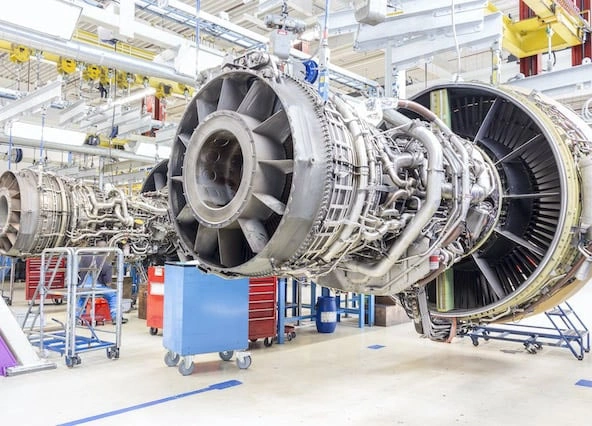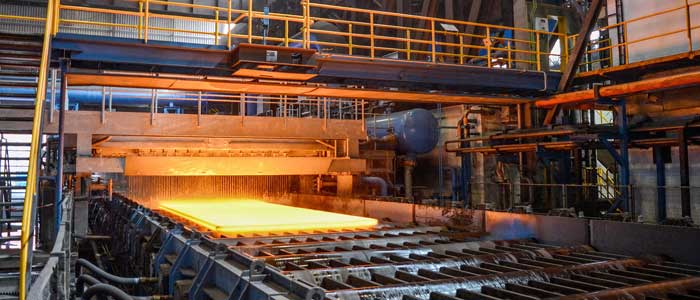In industries where heat resilience and strength are paramount, high-temperature alloy steels are indispensable. These materials are not just another option but a necessity in environments that require durability under extreme conditions. The ability of these steels to maintain their properties under such circumstances makes them a critical component in many industrial applications. In this article, we will delve into the properties of high-temperature alloy steels, exploring their significance and application in various fields, which can help engineers and decision-makers choose the right materials for their projects.
High-temperature alloy steel is a type of metal designed to perform well under elevated temperatures. Unlike ordinary steels, these alloys retain their strength, resist corrosion, and maintain their shape even when exposed to high temperatures. This makes them ideal for use in industries such as aerospace, automotive, and power generation, where materials often face extreme conditions. Moreover, the composition of these steels can be adjusted to suit specific requirements, making them versatile for a wide range of applications.
These steels are formulated with a mix of elements that enhance their thermal stability and mechanical strength. The addition of elements such as nickel, chromium, and cobalt plays a crucial role in improving their overall performance. As we explore further, you’ll see how the unique blend of elements in high-temperature alloy steels makes them stand out in challenging environments, providing not just functionality but also reliability.
Key Characteristics of High Temperature Alloy Steel
These steels are crafted to endure environments that would degrade ordinary materials. Here are some defining properties:
- Heat Resistance: High-temperature alloy steels maintain structural integrity at elevated temperatures, often exceeding 500°C (932°F). This property is crucial for applications like turbines and engines where temperatures can soar. The thermal stability provided by these alloys ensures that machinery operates efficiently without the risk of failure due to thermal expansion or deformation.
- High Strength: These alloys exhibit superior tensile strength, allowing them to withstand significant stress without deformation. This strength is essential in structural applications where materials must support heavy loads while exposed to high temperatures. The ability to maintain strength under such conditions reduces the risk of structural failure, enhancing safety and reliability.
- Corrosion Resistance: Many high-temperature steels are designed to resist oxidation and corrosion, making them suitable for harsh environments. This resistance is especially important in chemical processing and power generation, where corrosive substances and extreme conditions are prevalent. The longevity of these materials in such settings translates to reduced maintenance costs and increased operational efficiency.
- Durability: The combination of high strength and heat resistance contributes to the long lifespan of these materials, even in demanding applications. This durability ensures that components made from high-temperature alloy steels can withstand repeated thermal cycling and mechanical stresses without compromising performance. As a result, industries benefit from reduced downtime and longer intervals between part replacements.
Common Types of High-Temperature Alloy Steels
Various compositions of high-temperature alloy steels are available, each tailored for specific applications. Let’s explore some common types:
Austenitic Stainless Steel
Austenitic stainless steels are well-known for their excellent heat and corrosion resistance. They typically contain high levels of chromium and nickel, which enhance their ability to withstand heat without losing strength. The face-centered cubic crystal structure of austenitic steels allows them to remain non-magnetic and ductile, even at cryogenic temperatures. This makes them highly versatile, used in everything from kitchen appliances to industrial piping.
The presence of nickel not only improves heat resistance but also enhances the steel’s toughness and ductility. This combination of properties makes austenitic stainless steels suitable for a wide range of applications, including those requiring weldability and formability. Their stability at high temperatures also makes them an excellent choice for heat exchangers and other high-temperature applications in the chemical and petrochemical industries.
Ferritic Stainless Steel
Ferritic stainless steels are characterized by their good heat and oxidation resistance. They are often used in applications where moderate strength and high thermal conductivity are required. These steels have a body-centered cubic structure, which gives them good mechanical properties and makes them less susceptible to stress corrosion cracking compared to austenitic steels.
Ferritic steels are magnetic and typically contain lower nickel content, which can make them more cost-effective. Their high thermal conductivity makes them an ideal choice for automotive applications, such as exhaust systems, where efficient heat dissipation is crucial. Additionally, their resistance to stress corrosion cracking enhances their suitability for environments where chlorides are present.
Nickel-based Alloys
Nickel-based alloys are renowned for their exceptional performance in high-temperature environments. These alloys maintain their strength and resist corrosion at temperatures that would compromise other materials. The high nickel content, often combined with chromium and molybdenum, provides excellent high-temperature strength and corrosion resistance.
These properties make nickel-based alloys a preferred choice in the aerospace industry for engine components, where they must endure extreme stresses and temperatures. The stability of these alloys at high temperatures also makes them suitable for use in gas turbines and other power generation equipment. Furthermore, their resistance to oxidation and scaling ensures long-term performance and reliability in the most demanding conditions.
Cobalt-based Alloys
Cobalt-based alloys offer remarkable resistance to wear and corrosion, making them suitable for applications involving high temperatures and aggressive environments. These alloys, often referred to as superalloys, are used in environments where other materials would fail due to wear, corrosion, or thermal degradation.
The high melting point of cobalt, along with the addition of chromium and tungsten, provides these alloys with excellent mechanical properties at elevated temperatures. Cobalt-based alloys are commonly used in the medical industry for prosthetics and dental implants due to their biocompatibility. Their resistance to thermal fatigue and creep also makes them ideal for use in gas turbine engines and other high-temperature applications.
Applications of High Temperature Alloy Steels
The unique properties of high-temperature alloy steels make them indispensable in many industries. Here are some key applications:
Aerospace Industry
In the aerospace sector, high-temperature alloy steels are crucial for the manufacture of turbine blades, engine components, and exhaust systems. The ability to withstand high temperatures and maintain performance ensures the safety and efficiency of aircraft. These materials must endure not only high temperatures but also rapid temperature fluctuations and mechanical stresses during flight.
The reliability of high-temperature alloy steels in aerospace applications contributes to fuel efficiency and reduces maintenance requirements. By maintaining their mechanical properties at extreme temperatures, these alloys help aerospace engineers push the boundaries of design, leading to advancements in aircraft performance and safety.
Automotive Industry
High-performance vehicles and racing cars benefit from these alloys in their engine components and exhaust systems. The heat resistance and strength of these materials contribute to improved performance and durability. In an industry where every gram counts, the use of high-temperature alloys allows for lighter, yet stronger components that enhance vehicle performance.
The automotive industry also relies on these alloys for catalytic converters and turbochargers, where high temperatures are a constant challenge. The durability of high-temperature alloy steels ensures that vehicles remain reliable over time, even under the most demanding driving conditions. This not only enhances performance but also contributes to reduced emissions and improved fuel economy.
Power Generation
In power plants, high-temperature alloy steels are used in boilers, turbines, and heat exchangers. Their ability to endure prolonged exposure to heat and pressure is vital for efficient energy production. The reliability of these materials in such critical applications ensures consistent power generation and reduces the risk of unplanned outages.
The use of high-temperature alloys in power generation also contributes to efficiency improvements by allowing higher operating temperatures, which can enhance the thermal efficiency of power plants. This is particularly important in the context of renewable energy sources, where maximizing efficiency is key to meeting sustainability goals.
Chemical Processing
The chemical industry utilizes high-temperature steels in reactors, furnaces, and piping systems. These materials resist corrosion and maintain structural integrity in environments that involve aggressive chemicals and high temperatures. The ability to withstand both thermal and chemical stress ensures the safe and efficient operation of chemical processes.
High-temperature alloy steels in chemical processing help prevent leaks and failures, which can be costly and hazardous. Their resilience to corrosion and wear extends the lifespan of critical equipment, reducing downtime and maintenance costs. This reliability is crucial for maintaining productivity and safety in chemical manufacturing and processing facilities.
Advantages of Using High-Temperature Alloy Steels
Choosing high-temperature alloy steels offers several advantages:
- Enhanced Performance: These materials provide reliable performance in extreme conditions, reducing the risk of failure and downtime. Their ability to maintain mechanical properties at high temperatures ensures consistent operation and efficiency.
- Longevity: The durability of high-temperature alloys extends the lifespan of equipment, resulting in cost savings over time. By reducing the frequency of replacements and repairs, industries can achieve greater operational efficiency and lower total ownership costs.
- Versatility: With various types available, these steels can be tailored to meet the specific requirements of different applications. This flexibility allows industries to select the most appropriate alloy for their specific needs, optimizing performance and cost-effectiveness.
- Safety: By maintaining integrity under stress, high-temperature alloys enhance the safety of structures and machinery. The reliability of these materials in critical applications reduces the risk of accidents and failures, protecting both equipment and personnel.
Selecting the Right Alloy for Your Needs
When choosing high temperature alloy steel, it’s essential to consider factors such as:
- Temperature Range: Determine the maximum temperature the material will be exposed to. This will help in selecting an alloy that can maintain its properties at the required operating temperatures.
- Environmental Conditions: Consider factors like corrosion potential and chemical exposure. Understanding the specific environment in which the alloy will be used is crucial for ensuring long-term performance and reliability.
- Mechanical Properties: Assess the required strength and flexibility. Different applications may require varying levels of tensile strength, ductility, and toughness, making it important to select an alloy that meets these criteria.
- Cost: Balance the benefits of high performance with budget constraints. While high-temperature alloys can be more expensive upfront, their durability and performance often lead to cost savings over time.
Consulting with material experts or suppliers can help you choose the right alloy for your specific needs. They can provide insights into the latest advancements and innovations in high-temperature alloy steels, helping you make informed decisions.
Conclusion
High-temperature alloy steels are vital in applications where strength, heat resistance, and durability are critical. By understanding their properties and applications, industries can better leverage these materials to enhance performance and safety. Whether in aerospace, automotive, power generation, or chemical processing, high-temperature alloy steels continue to play a pivotal role in advancing technology and innovation. Embrace these remarkable materials to ensure your operations withstand the test of heat and time, driving progress and efficiency in today’s demanding industrial landscape.










